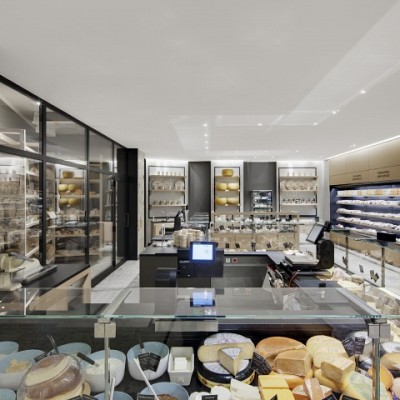The history of food criticism in newspapers
Food criticism in newspapers has a long and rich history. It started in the 19th century when newspapers began featuring food columns to discuss the quality and experience of dining establishments. These early critics paved the way for the more formal and structured reviews that we see today. Critics would visit restaurants anonymously, evaluate the food and service, and then share their opinions with readers. Over time, food criticism in newspapers became a trusted source for people looking to dine out and explore new culinary experiences.
Transition to digital platforms
Food criticism has shifted from newspapers to digital platforms in recent years. This transition has allowed for a wider audience reach and more immediate feedback on food reviews. On digital platforms, food critics can engage with their audience in real-time and reach a larger number of people compared to traditional newspapers. This shift has also opened up new avenues for food critics to explore different formats such as video reviews, interactive content, and social media engagement. The evolution to digital platforms has revolutionized the field of food criticism, making it more dynamic and accessible to a broader audience.
Impact of social media on food criticism
Social media has significantly transformed the landscape of food criticism. Platforms like Instagram, Yelp, and Twitter provide instant and widespread opinions on restaurants and dishes. Users now have the power to share their dining experiences with a vast audience, influencing where others choose to eat. This has led to a democratization of food critique, as everyday individuals can now sway public opinion with their reviews and photos. As a result, traditional food critics may find themselves sharing the spotlight with amateur bloggers and influencers whose opinions carry weight in the digital realm.
Role of online reviews in shaping opinions
Online reviews play a significant role in shaping opinions about food establishments. According to a study by BrightLocal, 92% of consumers read online reviews when considering a restaurant. Positive reviews can attract more customers, while negative ones can deter potential diners. Reviews on platforms like Yelp, Google, and TripAdvisor provide insights into the quality of food, service, and overall experience at a restaurant. These reviews can influence where people choose to dine, making them a powerful tool for both consumers and food establishments.
Diversity in food critics
Diversity in food critics is essential for offering varied perspectives on different cuisines. When a range of voices from various backgrounds evaluates food, it enriches the overall conversation and ensures a more inclusive representation of culinary experiences. Differing viewpoints can cater to a broader audience and help in promoting cultural appreciation through food criticism.
Influence of influencers on food critique
Influencers play a significant role in shaping food critique in today's digital age. Their opinions and recommendations can heavily impact where people choose to dine and what they choose to order. Many followers trust influencers for their honest reviews and recommendations, often considering them as a reliable source for exploring new culinary experiences. Influencers bridge the gap between traditional food critics and the general public, providing a more relatable and accessible perspective on food. Their influence has reshaped the landscape of food criticism, making it more diverse and inclusive.
Challenges faced by digital food critics
Digital food critics face unique challenges in today's fast-paced online food culture. Building credibility can be tough in the vast realm of digital platforms, where anyone can voice their opinions. Additionally, standards of authenticity and transparency are essential to gain trust from audiences who crave genuine reviews. Navigating sponsorships and partnerships while maintaining independence can be tricky, as financial incentives can sometimes cloud judgment. Staying relevant in a sea of ever-changing trends and algorithms is another hurdle that digital food critics must constantly overcome to make their mark.
Future trends in food criticism
Food criticism is evolving rapidly with the rise of digital platforms. In the future, expect to see more diverse voices and perspectives in food reviews. With social media and online blogs becoming prominent sources of food critiques, traditional newspaper reviews may decline in influence. Video reviews and interactive content could become more popular for sharing food experiences. The integration of artificial intelligence in analyzing food reviews and trends might also shape the future of food criticism. Stay tuned for exciting developments in how we critique and appreciate food in the digital age.
Benefits of digital platforms for food critique
Digital platforms provide a broader audience for food critiques, reaching more people than traditional newspapers. Critics can interact directly with readers, creating a dynamic conversation about food. Additionally, digital platforms offer real-time updates and instant sharing capabilities, making it easier for food critics to stay relevant and engage with their audience.
Conclusion: The changing landscape of food criticism
Food criticism has come a long way from newspapers to digital platforms. Today, food critics have a broader reach and influence thanks to social media and online platforms. As a result, the landscape of food criticism continues to evolve rapidly. Restaurant reviews, once confined to printed newspapers and magazines, now populate various digital platforms like websites, blogs, and social media channels. This shift has democratized food criticism, allowing more voices and perspectives to be heard. Additionally, the rise of user-generated reviews has transformed how people choose where to eat, making online opinions and ratings more crucial than ever. The future of food criticism seems to be firmly rooted in the digital realm, shaping how we perceive and experience dining out.







































